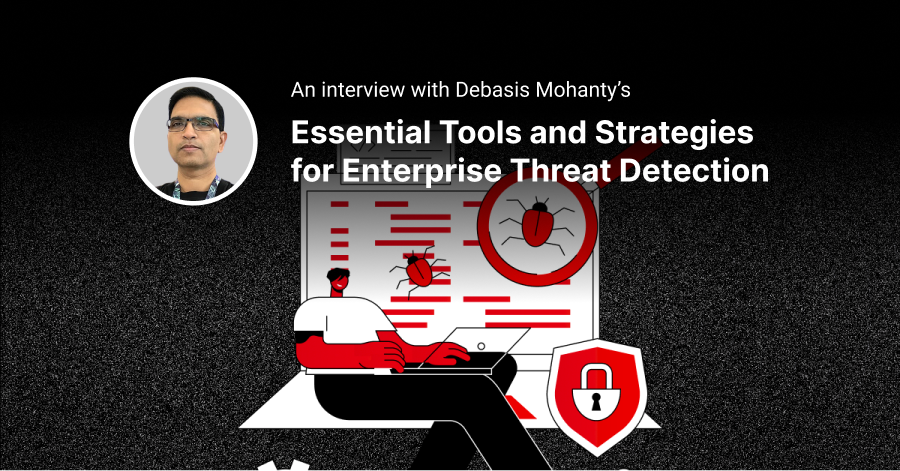In an era where every facet of our lives is becoming interconnected through the Internet of Things (IoT), the need for robust security measures has never been more pressing. IoT devices have become an integral part of our homes, workplaces, and even vehicles. However, with the convenience they offer comes an increased vulnerability to cyber threats. This is where IoT penetration testing comes into play – a proactive approach that aims to identify and rectify potential security weaknesses before malicious actors can exploit them.
The State of IoT Security
In the age of everything connected and smart, the Internet of Things (IoT) has become the new norm. Businesses and individuals alike are using IoT devices to automate and simplify tasks that were previously time-consuming and cumbersome.
But how secure are these devices? What are the risks involved?
Having a smart home is all fun and games until one fine day your Wi-Fi-enabled fridge starts to display the wrong expiration dates on the food items inside, or your connected security system starts sending out false alerts.
And when it comes to businesses using IoT to improve operations and streamline processes, the risks are just as serious. Glitches in automated systems could have widespread consequences ranging from quality control issues, supply chain disruption, data loss, and financial loss.
The number of IoT devices worldwide is estimated to be 13.15 billion right now. This number is expected to grow 3x in the next 7 years.
The most common security risks of IoT devices include:
1.Weak, guessable, or hardcoded passwords
2.Insecure network services
3.Insecure ecosystem interfaces
4.Lack of secure update mechanism
5.Use of insecure or outdated components
6.Insufficient privacy protection
7.Insecure data transfer and storage
8.Lack of device management
9.Insecure default settings
10.Lack of physical hardening
Source: OWASP
So, how do you protect your IoT devices? Penetration testing can be the first step.
What is IoT Penetration Testing?
IoT penetration testing is a comprehensive evaluation process that simulates real-world cyberattacks on IoT devices and networks. This methodical approach involves a series of strategic steps, each contributing to a holistic assessment of the security landscape surrounding these smart devices.
At its core, IoT penetration testing involves a simulated attack on IoT systems, much like a security drill. The objective is to uncover vulnerabilities and weaknesses that could be exploited by hackers, allowing organisations and individuals to take corrective actions proactively.
In a world where IoT devices are poised to outnumber humans, the importance of IoT penetration testing cannot be overstated. Cybercriminals are becoming increasingly sophisticated, and IoT devices, if left unprotected, can become potential entry points into broader networks. The consequences of a successful breach could range from unauthorised access to sensitive data to even compromising safety-critical systems.
The scope of IoT penetration testing extends beyond individual devices to encompass entire ecosystems. From smart homes and industrial facilities to connected cars, each interconnected node presents a potential risk. Conducting thorough IoT penetration testing, ensures the overall resilience of these systems.
The attack vectors in IoT devices include hardware, firmware, network, wireless communications, mobile and web applications, and cloud APIs.
Importance of IoT Security
IoT devices have permeated every aspect of our lives, from smart homes to industrial automation. However, with this rapid integration comes a pressing need for robust security measures.
As IoT devices become more prevalent, they also become lucrative targets for cybercriminals. These devices often collect and transmit sensitive data, making them vulnerable to various cyber threats such as unauthorized access, data breaches, and manipulation. Without adequate security measures in place, IoT devices can pose significant risks to privacy, safety, and even national security.
Furthermore, compromised IoT devices can serve as entry points for attackers to infiltrate larger networks, leading to potential disruptions in critical infrastructure and services. From smart thermostats to medical devices, any IoT device connected to the internet is susceptible to exploitation if not properly secured.
Implementing robust security practices for IoT devices is essential to mitigate these risks. This includes implementing strong authentication mechanisms, encrypting data transmission, regularly updating firmware, and monitoring for suspicious activity. By prioritizing IoT security, organizations can protect both their assets and their customers' privacy, fostering trust in the increasingly interconnected world.
Steps in IoT Penetration Testing?
Pre-engagement Preparation: Before starting a penetration testing exercise, meticulous planning is essential. This phase involves defining the scope, identifying the assets to be tested, and establishing the rules of engagement. For a smooth testing process, it's important to set clear expectations and goals from the outset.
Reconnaissance and Information Gathering: Just as a skilled detective gathers clues, the penetration tester collects information about the target IoT environment. This reconnaissance phase helps identify potential entry points and vulnerabilities, aiding in the creation of an effective attack strategy.
Vulnerability Scanning and Assessment: Using specialised tools, the penetration tester conducts vulnerability scans to pinpoint weaknesses in the IoT network. This step often involves automated assessments and manual probing to comprehensively evaluate potential risks.
Exploitation and Post-Exploitation: In this critical phase, the penetration tester attempts to exploit identified vulnerabilities to gain unauthorized access. This step helps uncover the potential impact of a successful cyberattack and highlights areas that require immediate attention.
Reporting and Remediation:The culmination of the penetration testing process lies in the reporting phase. A detailed and well-structured report outlines the vulnerabilities discovered, the extent of potential damage, and recommendations for mitigation. This report serves as a roadmap for remediation efforts to bolster IoT security.
Employing Responsible Disclosure:
Ethical considerations extend beyond the testing phase. Responsible disclosure of vulnerabilities to device manufacturers enables them to address issues promptly, enhancing the overall security of IoT devices.
Challenges of IoT Pen Testing
Security Risks in IoT Devices:The very essence of IoT devices, their interconnectedness, can also be their Achilles' heel. With diverse hardware, firmware, and communication protocols, ensuring uniform security standards across IoT ecosystems remains a challenge.
Testing Complex IoT Ecosystems:The complexity of IoT ecosystems, comprising a multitude of devices, platforms, and interfaces, poses a significant testing challenge. Ensuring comprehensive coverage and identifying potential interdependencies demand a meticulous approach.
Best Practices for IoT Penetration Testing
- Staying Updated with IoT Security Threats: IoT security threats evolve rapidly. Regularly staying informed about the latest vulnerabilities, attack techniques, and mitigation strategies is crucial for effective penetration testing.
- Make Hardware Tamper Resistant: Incorporate hardware design that resists tampering attempts, safeguarding the physical integrity of the IoT devices against unauthorised access.
- Provide for Firmware Updates/Patches: Design the IoT devices to support timely firmware updates and patches, ensuring that security vulnerabilities can be addressed promptly to maintain device resilience.
- Specify Procedures to Protect Data on Device Disposal: Establish clear procedures for securely erasing or disposing of IoT devices, preventing sensitive data from falling into the wrong hands during device end-of-life.
- Use Strong Authentication: Implement robust authentication mechanisms to ensure that only authorized individuals can access and control IoT devices, minimising the risk of unauthorised breaches.
- Use Strong Encryption and Secure Protocols: Employ strong encryption protocols and secure communication channels to protect data transmission and ensure that sensitive information remains confidential.
- Specify Destroy Method if Device Breaks Down: Define secure procedures for decommissioning and destroying malfunctioning IoT devices to prevent potential data leakage or exploitation even in the event of device failure.
Source:
OWASP
Regulatory Compliance for IoT in Australia
In Australia, the government has taken proactive steps to enhance the security of Internet of Things (IoT) devices through the introduction of the Code of Practice: Securing the Internet of Things for Consumers. This voluntary set of measures, developed in collaboration with industry and cybersecurity experts, serves as the minimum standard recommended for IoT devices. The Code aims to raise awareness of security safeguards, bolster consumer confidence in IoT technology, and facilitate greater adoption of IoT solutions across Australia.
Developed by the Department of Home Affairs in partnership with the Australian Signals Directorate's Australian Cyber Security Centre, the Code comprises 13 principles designed for industry stakeholders. Emphasizing the importance of addressing default passwords, vulnerability disclosure, and security updates, the government recommends prioritizing action on these top three principles to maximize security benefits in the short term.
Aligned with international standards and drawing upon guidance from the United Kingdom, the Code of Practice sets expectations for both domestic and international manufacturers regarding the security features expected of devices available in Australia. It underscores the significance of ensuring the security and integrity of IoT devices to enhance various aspects of daily life and mitigate risks to families, the economy, and national security.
Consumer IoT devices, including wearable gadgets and smart home appliances, fall within the scope of the Code, excluding mobile phones due to their sophistication and existing regulatory frameworks. Regular reviews of the Code will ensure its ongoing relevance and effectiveness in safeguarding IoT ecosystems in Australia.
Conclusion
The role of IoT penetration testing in shaping a secure future cannot be underestimated. Test your IoT devices regularly to pave the way for a safer digital landscape. As the IoT ecosystem continues to expand, taking action today will help ensure that the promise of a connected future remains both convenient and secure.








